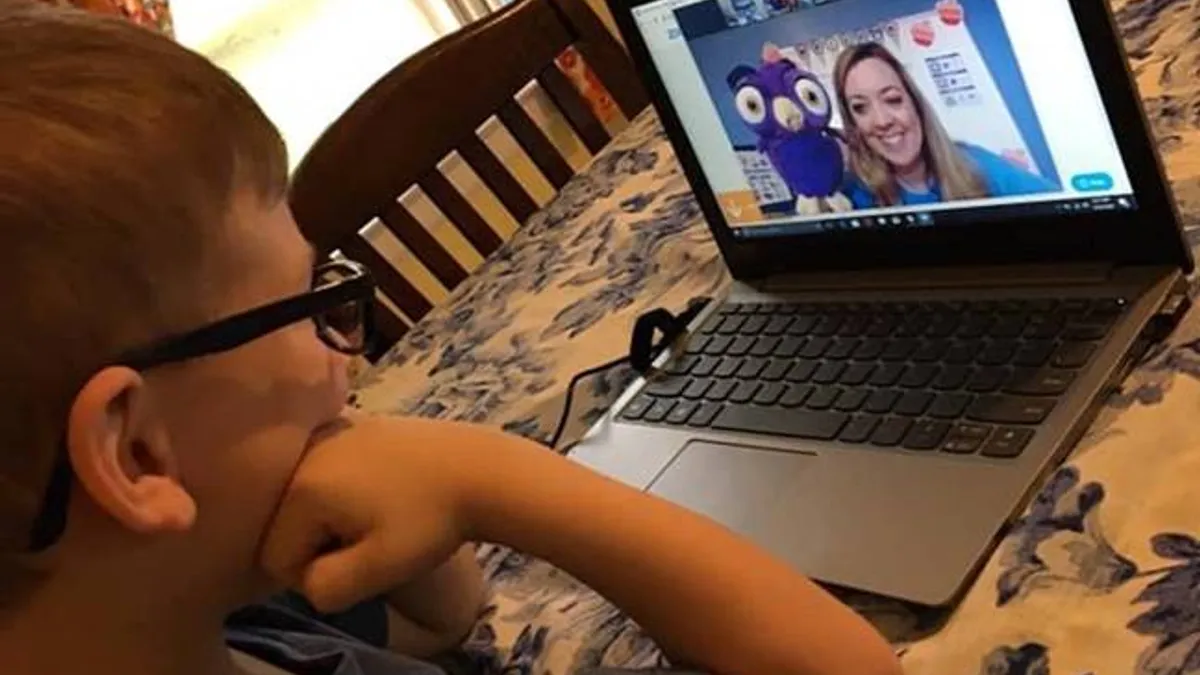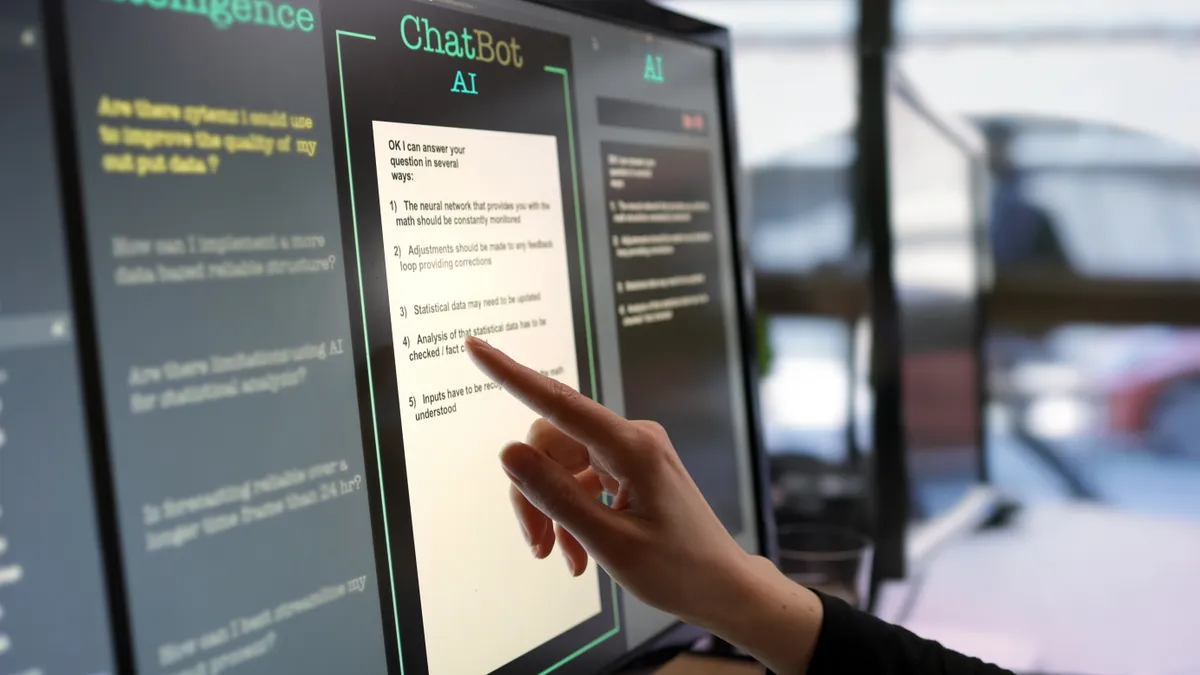The novel coronavirus pandemic has required educators nationwide to rethink curriculum structures, resources and goals on the fly to fit a remote learning model. Upending the existing way of learning is anything but a seamless process, not to mention a task that had to happen almost overnight in some cases.
As the dust continues to settle and additional adjustments are still yet to come, a handful of district curriculum and instruction directors share what they've learned and what advice they have for their peers.
Robert Dillon, School District of University City in Missouri
Our success has come from a layered approach to our remote learning plan. It started with caring for students and families, next we reinforced skills and concepts learned in previous weeks, and then we rolled on to new topics and ideas once the technology challenges and communication routines were established.
We also took an approach that valued innovation and positive risk-taking from all sides. This allowed teachers the freedom to initiate new solutions quickly without the burden of multiple levels of approval. This required us to trust in a deep way, something that was only possible when a culture of professionalism had been nurtured for years.
There was also a clear sense that this was a learning-first initiative that would be supported by technology, and we never let the tail wag the dog. This has led to a new level of confidence among teachers that they can now navigate the technology that they need to implement excellent learning.
The lesson that we continue to learn is the depth of basic needs of our families. Before a crisis, you feel like you know your families and their needs, but this pandemic has ripped off the rose-colored glasses. This has led us to provide meals, mental health services, technology access, and many other family supports in new and intense ways. We believe that this will help our community to heal and grow in fresh ways moving forward.
We are also learning the extent that our teachers, leaders and community will go to support children. We are raising money to provide food for the summer months, delivering technology door-to-door, and working daily to craft meaningful learning that meets the needs of all students especially those with exceptional needs.
Rebecca Toetz, DeForest Area School District in Wisconsin
Our leadership team worked together to identify a team of teachers that have the skill set to do remote learning. We then created a "Virtual Learning" team that helped to create professional development for the other teachers, create our virtual learning plan, and continue troubleshooting with staff, students and parents. That collaboration has proven to be extremely valuable.
Having strong relationships with staff, students and families makes the virtual learning world much smoother. Teachers knowing their students well and creating constant connections with engaging activities is proving to have a positive outcome. We are learning that some children are thriving with virtual learning and finding their voice in the learning. We are also learning that we need to get creative and work really hard as a staff to reach some learners. Our staff is working together to share what is working and what isn't.
Anthony Mignella, Baldwin Union Free School District in New York
Personally, and professionally, COVID-19 has challenged us and will continue to challenge us in ways that we have never been challenged before. How do you maximize the learning experiences for our learners and what lessons can we all learn during this period of remote learning? Let’s face this disruption to our practice together, seizing opportunities and offering the best of ourselves to support each other and what’s best for our learners and families.
Administrators and teachers are working diligently on ensuring the quality of our curriculum remains intact while seizing opportunities to design and develop tasks that are meaningful, relevant, and foster conceptual understanding, deep thinking, collaboration and communication.
Use technology to augment curriculum, not replace it. It is essential that parents aren’t expected to simply teach or supervise their children all day through posted assignments and videos. Remote learning should include a combination of asynchronous and synchronous instruction using a variety of instructional technology applications. Whether it’s a live virtual strategy group lesson using Google Meets, a self-paced lesson using a learning application such as Nearpod, or sharing thoughts and photos with classmates using a tool like Flipgrid, we need to provide our learners and parents a flexible but structured schedule so that their time is used most effectively and the learning opportunities allow for learners and teachers and to interact with each other.
When developing asynchronous and synchronous learning activities, consider the following essential questions: How will learners access instructional plans and materials? How will learners receive assignments, submit work and receive feedback? How will learners collaborate with you and with each other? How can you use authentic assessments to connect learning to real, meaningful topics and assess the learners' understanding and transfer of knowledge?
Simplify access for parents and students. In addition, with all the various instructional applications available to schools, consider using a single sign-on application dashboard such as Clever, which allows all the instructional applications a learner is required to use on one dashboard and can all be accessed with just one login credential.
Remember to focus on mindfulness and mental health. Family engagement, support and strengthening your connections with learners and parents is a critical component to a successful remote learning experience. During a time when learners and families are feeling isolated and under tremendous stress for a host of reasons, it is more important than ever for teachers, administration, and pupil services to continue to make connections, make personal calls to families and students just to check-in, and provide regular mindfulness/mental health opportunities.
Consider creating live virtual mindfulness events for learners, families and staff, such as morning meditation through Google Meets where a student leads the session, or a workshop conducted by your schools’ psychologists and social workers on mental health resources and support options.
Offer ongoing professional support for faculty and administration. When we transitioned to eLearning, although our administration did provide our teachers with extensive professional development sessions leading up to the school closures, we are still providing support to our teachers from weekly updates on resources, tips and live professional development sessions on how to use various instructional application tools.
Working together, we will come out of this safe, healthy and even more skillful at using technology to personalize learning.
Matthew X. Joseph, Leicester Public Schools in Massachusetts
Moving from consuming content to creating during Covid-19: Active learning refers to the idea that students are actively engaged in the learning process, rather than passively absorbing content. Students engage in the material they study through reading, writing, talking, listening and reflecting. For example, students can solve problems, answer questions, formulate questions of their own, discuss, explain, debate or brainstorm during class.
The benefits of using such activities are many, including improved critical thinking skills, increased retention and transfer of new information, increased motivation and improved interpersonal skills. During this time of remote learning, students need to be creating content and provided learning opportunities rather than digital worksheets and rote learning material.
Virtual professional learning: Districts need to create long-term virtual professional development plans to support educators and encourage the effective use of digital tools. As educational leaders, we sprinted to support teachers with ideas, lessons and support. But now, a month into remote learning, it’s no longer a sprint; it’s looking more and more like a marathon. Technology trainers need to create a long-term plan to support educators and encourage the effective use of digital tools for instruction. Online meetings and digital communication have become the norm for providing learning opportunities to educators now. Having strategies for virtual training will make these opportunities more impactful.
Strategies for remote mentoring: When it comes to providing continuous learning opportunities for educators during extended closings, online meetings and digital communication has become the norm. When we talk about mentoring, we think of two educators in a room, talking, planning and collaborating. Unlike traditional mentoring, virtual mentoring relies heavily on digital tools that may be new to educational leaders and teachers. So what exactly does remote mentoring look like?





















